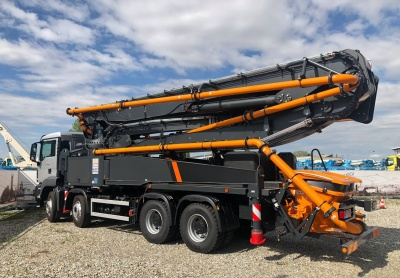In the intricate network of industrial automation, the coordinated operation of every component is crucial to the efficiency and stability of the system. Among these components, the CAN bus compatible industrial joystick, with its unique capabilities, has quietly emerged as a key element in numerous automation scenarios.

Understanding CAN Bus
The CAN bus is a serial data communication bus. It was created to meet the demand for efficient data transfer among various test instruments and control units in vehicles.
The CAN bus functions in a multi-master, multi-slave, half-duplex mode. All nodes on the bus can communicate with each other without relying on a central controller. It employs a non-destructive bus arbitration technique. When multiple nodes attempt to send data simultaneously, the node with the highest-priority message gains access to the bus, while lower-priority nodes defer. This mechanism ensures efficient data transfer even in network environments with heavy traffic.
How Industrial Joysticks Fit In
Industrial joysticks are input devices utilized to control machinery and equipment across diverse industrial applications. A CAN bus compatible industrial joystick combines the functionality of a traditional joystick with the communication capabilities of the CAN bus.
These joysticks are equipped with sensors, often hall-effect sensors, which detect the position and movement of the joystick handle. Hall-effect sensors operate based on the principle that a voltage difference is generated across a conductor when it is exposed to a magnetic field. This non-contact sensing method offers long-lasting and reliable performance. When the operator moves the joystick, the sensors generate signals corresponding to the movement. These signals are then converted into digital data and transmitted over the CAN bus.
Advantages in Automation
Simplified Wiring and Installation:In automation systems, reducing wiring complexity brings significant benefits. With a CAN bus compatible joystick, instead of running multiple wires for each signal from the joystick to different control units, a single CAN bus connection suffices. This not only simplifies the physical installation process but also reduces the likelihood of wiring errors. For instance, in a large-scale industrial robotic system where multiple joysticks control different axes of movement, using CAN-bus-connected joysticks can substantially decrease the amount of wiring, resulting in a neater and more manageable installation.
High-Speed and Reliable Communication:The CAN bus enables high-speed data transfer, with a maximum data information transmission rate of 1 Mbit/s. This ensures that commands from the joystick are quickly relayed to the relevant control systems within the automation setup. In applications where real-time response is critical, such as high-speed manufacturing processes or precision-controlled robotic operations, the fast communication of the CAN bus is indispensable. Moreover, the CAN bus features built-in error-detection and correction mechanisms. It can identify errors such as bit errors, CRC (Cyclic Redundancy Check) errors, and format errors. In the event of an error, the bus can take appropriate actions, such as retransmitting the data, to guarantee reliable communication. This high level of reliability is of great importance in industrial settings, as incorrect commands from the joystick could lead to costly errors or safety risks.
Flexibility and Scalability:Automation systems frequently require flexibility and scalability to adapt to changing requirements. CAN bus compatible industrial joysticks allow for easy integration with other devices on the CAN bus network. New joysticks can be added to the network without major reconfigurations, and various types of sensors or actuators can also be connected to the same bus. For example, in an automated warehouse system, as the operation expands and new handling equipment is introduced, additional CAN-bus-enabled joysticks can be seamlessly integrated into the existing network to control the new machinery. This flexibility makes it possible to build complex and customized automation systems.
CAN bus-compatible industrial joysticks, with their distinctive technological advantages, have redefined the control and communication paradigms in industrial automation. From simplifying wiring to reduce installation complexity, ensuring precise and efficient production through high-speed and reliable communication, to adapting to dynamic system upgrades with flexible and scalable features, each advantage effectively addresses the pain points of traditional industrial control. In the current era of continuous advancement in Industry 4.0 and smart manufacturing, these joysticks serve not only as a bridge for human-machine interaction but also as a key driver propelling industrial automation towards intelligence and flexibility.